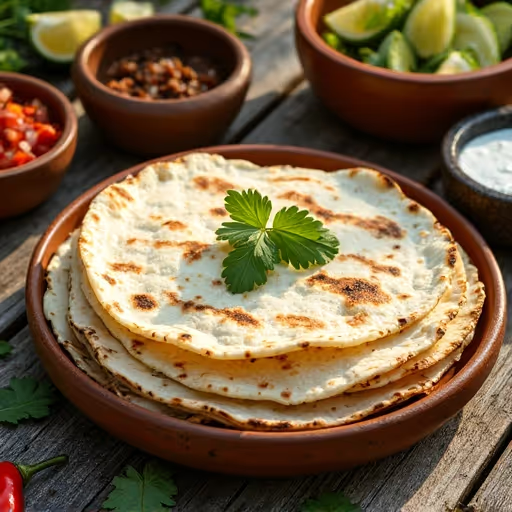Grillwisehub FAQ for:
Smoked Beef Brisket with Alabama White BBQ Sauce
Can I use a hybrid method to reduce the cooking time for this smoked brisket?
Yes, you can use a hybrid method to reduce the overall cooking time whilst still getting authentic smoky flavour. After the initial 3-4 hours of smoking (which is when the meat absorbs most of the smoke flavour), you can transfer the brisket to an oven set at 121°C (250°F) for the traditional recipe or 135°C (275°F) for the low-calorie version. Alternatively, you can use a pressure cooker after smoking: pressure cook on high for 60-75 minutes (depending on size), then finish in a hot oven at 190°C (375°F) for 15-20 minutes to form a bark. For an even quicker method, you could use a sous vide at 68°C (155°F) for 24-30 hours with 1-2 teaspoons of liquid smoke added to the bag, then finish with a hot smoke or oven sear. While these methods won't produce identical results to a full 12-14 hour smoke, they can still yield excellent brisket with significantly less time commitment.
Do I have to cook a full brisket or can I use just a portion?
No, you absolutely don't have to commit to smoking an entire brisket! You can easily smoke just the flat cut (as in our low-calorie version) or even the point end if you prefer more marbling. Cooking times will obviously be shorter—typically 8-10 hours total for a 3-3.5 kg (6.5-8 pound) flat versus 12-14 hours for a full packer. The fundamental approach remains the same: smoke until you've developed a good bark and reach an internal temperature of about 74°C (165°F) before wrapping, then continue cooking until probe tender at 93-96°C (200-205°F). A smaller cut will move through these stages more quickly, so rely on temperature and tenderness rather than time. The crucial rest period of at least 1 hour still applies regardless of size. This approach is brilliant for smaller households or if you're just starting your brisket journey and want a more manageable cut to practise with.
What are the most common mistakes to avoid when smoking a brisket?
The most common brisket smoking mistakes to avoid include: Improper trimming—leave 6mm (1/4 inch) of fat for the traditional version or 3mm (1/8 inch) for the low-calorie version; trimming too much fat leads to dry meat while too little prevents proper bark formation. Rushing the process—cook to temperature, not time; brisket is done when a probe slides in with no resistance at 93-96°C (200-205°F). Opening the smoker frequently—this causes temperature fluctuations; resist checking more than once every 2-3 hours. Skipping the rest period—this crucial step allows juices to redistribute; rest wrapped for at least 1 hour, preferably 2. Slicing incorrectly—always slice against the grain and note that the grain direction changes between the point and flat sections of a whole packer brisket. Temperature management—maintain a consistent cooking temperature by setting up your smoker for indirect heat and monitoring with reliable thermometers. Impatience during the stall—when the internal temperature stalls around 65-71°C (150-160°F), resist increasing temperature; this is when collagen breaks down.
How does the nutritional profile of this brisket fit into different dietary approaches?
This brisket recipe can fit into various dietary approaches, depending on which version you choose. The traditional recipe provides 395 calories per serving with a macronutrient distribution of approximately 32% protein (32g), 66% fat (29g), and 2% carbohydrates (4g), making it well-suited for ketogenic and low-carb diets. The low-calorie version offers 275 calories per serving with a macronutrient profile of approximately 49% protein (34g), 49% fat (16g), and 2% carbohydrates (2g), providing a more balanced protein-to-fat ratio better suited for high-protein, moderate-fat dietary approaches. Both versions are naturally gluten-free and dairy-free (traditional version). The low-calorie version reduces total calories by 30% primarily by using leaner brisket flat and replacing full-fat mayonnaise with Greek yoghurt and buttermilk. Brisket contains significant levels of B vitamins, particularly B12 which supports nervous system function, and zinc which aids immune function. The cooking method (smoking) doesn't require additional oils, keeping added fats to a minimum while the long cooking process breaks down collagen into gelatin, providing beneficial amino acids for joint health.
What's the best way to store and reheat leftover brisket without drying it out?
For optimal storage and reheating of leftover brisket: Storage: Refrigerate sliced brisket within two hours of cooking, storing it in its natural juices in airtight containers for up to 4 days at 4°C (40°F) or below. For longer storage, vacuum seal portions and freeze for up to 3 months. Always label with the date. Reheating from refrigerated: For best results, place refrigerated slices in a baking dish with 60-120ml (1/4-1/2 cup) beef stock or reserved juices, cover tightly with foil, and heat in a 135°C (275°F) oven until the internal temperature reaches 74°C (165°F), approximately 15-20 minutes. Alternatively, use sous vide at 68°C (155°F) for 45 minutes with a tablespoon of juices in the bag. Reheating from frozen: Never thaw meat at room temperature. Either thaw overnight in the refrigerator before reheating, or for sous vide users, place the frozen vacuum-sealed brisket directly into a 68°C (155°F) water bath for 90 minutes. For sauce storage: Keep the Alabama white sauce refrigerated separately in an airtight container for up to 1 week. If separation occurs, simply whisk before serving. Always reheat brisket only once and discard any leftovers that have been at room temperature for more than 2 hours.






